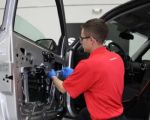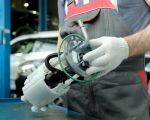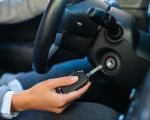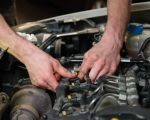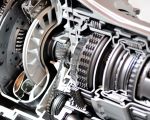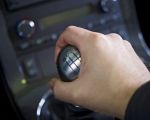1. What Happens During a Tire Blowout?
Tire blowouts can be one of the most alarming experiences while driving. I remember the first time I had one—it was a sunny afternoon, and I was cruising down the highway when suddenly, I heard a loud pop followed by a sharp, whistling noise. My car began to veer off course, and I quickly realized that I had lost a tire. The feeling of panic and uncertainty crept in as I struggled to maintain control of the vehicle.
A tire blowout occurs when a tire bursts due to internal damage or excessive pressure. It’s often caused by hitting something like a pothole, sharp objects on the road, or underinflated tires. In my case, I had been driving on a tire that had a slow leak, and the pressure had gradually dropped without me noticing, making it more vulnerable to failure. Once the tire burst, the air pressure inside rapidly escaped, causing the tire to lose its shape and the car to become harder to control.
Understanding what happens during a blowout is crucial. When a tire blows out, it can cause your vehicle to lose traction, especially if you're driving at high speeds. This is why it’s essential to know exactly what to do if it happens to you.
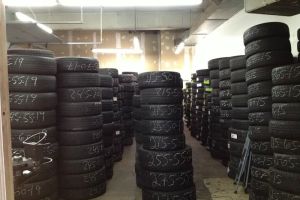
MR. TIRE INC.
2078 New York Ave, Huntington Station, NY 11746, USA
2. How to Safely Respond to a Tire Blowout
The first thing to remember when you experience a tire blowout is to stay calm. Panicking will only make the situation worse. Here are the critical steps to follow, which I’ve learned through experience:

MR. TIRE INC.
2078 New York Ave, Huntington Station, NY 11746, USA
2.1 Keep a Firm Grip on the Steering Wheel
When the tire blows, your car will likely pull in one direction. This is why it’s important to maintain a firm grip on the steering wheel. Keep both hands on the wheel to maintain control and prevent the car from veering off into traffic or hitting another object.
2.2 Avoid Slamming on the Brakes
In my panic, my first instinct was to brake hard. However, braking suddenly can cause your vehicle to lose even more control, especially with a blown tire. Instead, gently take your foot off the accelerator and allow the car to gradually slow down. This gives you time to regain control and avoid skidding.
2.3 Steer Toward the Shoulder
Once you’ve slowed down a bit, steer your vehicle toward the shoulder of the road or another safe area. This is particularly important if you’re on a busy highway. I learned the hard way that stopping in the middle of the road increases your risk of being involved in a secondary accident, especially when other drivers don’t know how to react.
2.4 Turn on Your Hazard Lights
Make sure to activate your hazard lights as soon as you can. This alerts other drivers that you're experiencing an emergency and helps them avoid your vehicle. This simple action can be a lifesaver in terms of visibility.
3. What to Do After the Blowout: Assessing the Situation
Once you've safely pulled over and stopped the car, it’s time to assess the situation. Before attempting to change the tire or call for assistance, make sure you’re in a safe area away from traffic.
I always make sure that my car is in “park” and that the parking brake is engaged. If you don’t have a spare tire, or if you’re not comfortable changing the tire yourself, you’ll need to call for assistance. This is when roadside assistance or a towing service comes in handy.
3.1 If You Have a Spare Tire
If you do have a spare tire and the tools necessary to change the flat, here are the basic steps:
- Use a jack to lift the car off the ground.
- Loosen the lug nuts and remove the damaged tire.
- Place the spare tire on the wheel hub and tighten the lug nuts in a star pattern.
- Lower the vehicle and secure the lug nuts fully.
While I’m fairly comfortable with changing a tire myself, I always make sure that I’ve double-checked my tools and the condition of the spare tire before embarking on a long trip. It’s important to note that some newer cars don’t come with a spare tire, but instead offer a tire repair kit, so always check your car’s emergency kit.
3.2 When You Need Towing Assistance
If you don't have a spare, or if the damage is beyond a simple tire change, you’ll need to contact a towing service. It’s important to have the contact number of a reliable roadside assistance service handy. On my last trip, I had to call a tow truck after my tire blowout because my spare wasn’t in good shape. A good towing company will not only get your car to safety but also help you find a nearby service shop to replace the tire.
4. Preventing Tire Blowouts: Tips for Avoidance
Of course, the best way to handle a tire blowout is to avoid one in the first place. There are a few simple things I’ve learned over the years that can help you prevent blowouts and keep your tires in good condition:
4.1 Regular Tire Inspections
Make it a habit to check your tires regularly for signs of wear and tear, punctures, or anything unusual. I take a few minutes before every road trip to inspect my tires, ensuring they have proper tread depth and no visible damage.
4.2 Maintain Proper Tire Pressure
Low tire pressure is one of the most common causes of blowouts. Always ensure your tires are properly inflated, especially before long trips. I’ve found that keeping a portable tire inflator in the car is an excellent way to keep my tires at optimal pressure.
4.3 Avoid Overloading Your Vehicle
Overloading your car puts undue stress on the tires and increases the likelihood of a blowout. Make sure you’re aware of your vehicle’s weight limit and avoid carrying excessive loads, especially when going on long drives.
5. When to Seek Professional Help for Tire Maintenance
It’s always a good idea to have a professional inspect your tires, especially if you’ve had a blowout. I found that regular visits to my local tire shop for alignment, balancing, and rotation have helped prolong the life of my tires. A professional can spot potential issues before they become emergencies.
If you’re unsure about your tire’s condition, seeking professional advice can save you from a lot of future headaches, including costly repairs and dangerous blowouts.













